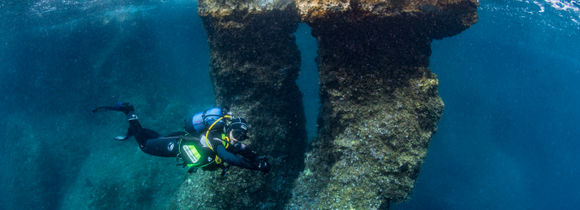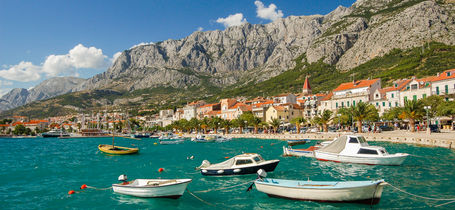Hvar Diving
Diving around the waters of the island of Hvar in Croatia means having the opportunity to play in and around the many rock formations and an endless amount of marine life of all shapes and sizes all submerged in clear waters for a vibrant experience.
Diving in Hvar
Hvar is a resort island located off of the Dalmatian Coast of Croatia, and it lies in the Adriatic Sea. Some of the highlights above water include historical architecture, beautiful beaches and sparkling blue waters. Once divers submerge themselves in the water they will have an exciting selection of underwater experiences. There are a handful of dive centres and dive resorts located in towns such as Jelsa, Stari Grad and Vrboska. The diving professionals here will help instruct those wanting to take dive courses, or guide the qualified divers to the many dive sites of the region.
Hvar is part of an archipelago and many of the other islands of this archipelago are visited during dive trips. Some of the underwater experiences here include tunnels, steep walls, canyons, sea caves, shipwrecks, chimneys, and the chance to spot some spectacular including large Gorgonians, an abundance of corals and sponges, and a large array of marine fauna.
Best time to dive
Luckily for divers, diving in Croatia and in the Adriatic Sea is possible year round. In the summer months between June and September, the water temperatures here are the warmest. During these months, the waters are also the calmest. In the winter, the water temperatures range between 15 and 19 degrees Celsius, while in the summer they go up to 25 degrees Celsius. The visibility is usually very good here, it ranges between 10 and 30 metres, with 20 metres being an average. The species which inhabit these waters are there throughout the year, so are not seasonal.
Types of diving
The diving that can be done around Hvar, and the other islands of this archipelago, caters to many interests, mostly reached by boat and a few from shore. For the novice divers, there are numerous protected, shallow and calm dive sites for an array of dive courses. For those who enjoy visiting the natural underwater playground in the form of canyons, tunnels, swim throughs, chimneys, sea caves and steep walls will find many opportunities here. For those who enjoy wrecks, there are also some opportunities here. For underwater photographers, or those who love spotting tiny creatures or large schools of fish surrounding the reefs are also not going to be disappointed here. Many of the dive sites here are also deep enough for technical divers to have a chance to reach deeper depths.
What to see
There is a plethora of marine life to be spotted in this region, and due to the clear waters, the colours are incredibly vibrant. The reefs are densely packed here with a multitude of species including Red Gorgonians, Red Algae, Sea Fans, Yellow Sponges, Orange Sponges, Anemones, and many more species of corals and sponges. Some of the many species which inhabit these reefs include John Dory, Conger Eel, Scorpion Fish, Moray Eel, Lobsters and other Crustaceans, Dogfish, Sea Bream, Jacks, Octopus, some resident Seahorses, colourful Nudibranchs, bright yellow umbrella slugs, Horned Blennies and more. The reefs are sprinkled with schools of Black Damselfish, Bream, Rainbow Wrasse and Sardines. Underwater photographers should always have their cameras ready.
Best places to dive
Seahorse Bay is a dream dive site for macro lovers. This is a shore dive with easy access into these calm waters. Divers here can spot many Nudibranchs, Horned Blennies and the five resident Seahorses.
The Angel of the Abyss is a shallow cave with the entrance at 9 metres and the exit at 17 metres making it accessible to even more novice divers. It is around 30 metres long and torches are needed, but the crystal clear waters make for a spectacular first cave diving experience.
Poseidon Pillar is a chimney dive, which is a unique experience for many. DIvers enter at 30 metres and exit up at 11 metres. Inside there are many species which divers will pass by.
Discodoris Drift is a drift dive where divers will glide along a reef wall which is covered in discodoris Nudibranchs which create beautiful pops of colour on the reef walls.
Tritons Lookout is a dive site which truly resembles an underwater playground with small caves, overhangs, walls, tunnels and so much more!



